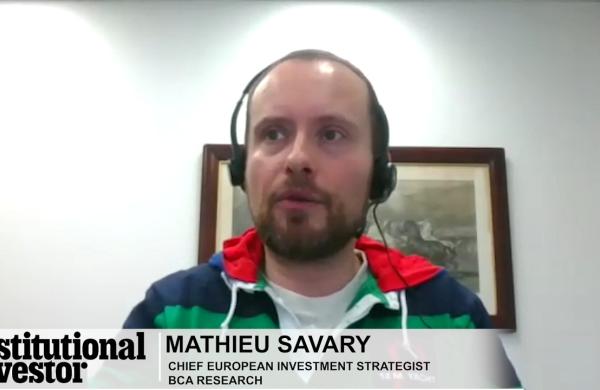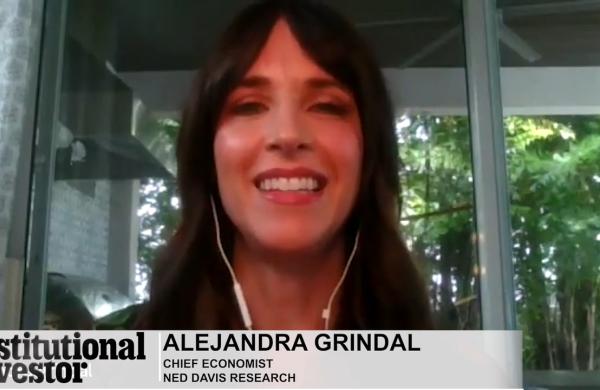Growth investors are a naturally optimistic -- dare we say exuberant? -- bunch, but since the market cracked in 2000, they have been in a bit of a sulk. Small wonder. For the five years ended April 15, the large-cap Russell 1000 growth index declined by an average annual 9.02 percent. The Russell 1000 value index, on the other hand, rose by an average annual 5.4 percent. Last year in the battle of the indexes, value bested growth by more than 10 percentage points. And the gap persists: Between January 1 and April 15, growth dropped 6.7 percent, while value dipped 3.4 percent.
Might it be time for the league tables to turn? Is a growth spurt in the offing? An increasing number of money managers think so.
"Much of growth stocks' underperformance during the past five years has reflected the unwinding of the excessive premium accorded to them in the late 1990s," says Robert Sharps, manager of the $56 million T. Rowe Price Institutional Large Cap Growth Fund. "At this point we've fully gone through that process."
"Valuations of many growth companies have come down to levels we haven't seen for ten to 15 years," notes Bruce Bartlett, manager of the $123 million Lord Abbett Large-Cap Growth Fund.
Vadim Zlotnikov, chief investment strategist at Sanford C. Bernstein & Co. in New York, says, "Value and growth stocks are trading at similar multiples, making it difficult to differentiate among stocks on the basis of value." He believes growth, as a style, will begin to outperform as soon as investors are able to identify the types of companies that will produce earnings gains in a decelerating economic expansion. Among the sectors he thinks will lead the upturn are health care, excluding the major pharmaceuticals companies, and certain segments of software and technology consulting services.
In a classic turnabout, many value stocks now sell at prices that make them look like growth stocks, and vice versa. The Russell 1000 value index trades at a PEG ratio (the price-earnings multiple divided by the earnings growth rate) of 1.24. By contrast, the PEG ratio of the Russell 1000 growth index is 1.17. And at 1.5, the price-to-sales ratio for the Russell 1000 growth index is as low as it has ever been.
Bernstein's Zlotnikov points out that in mid-April growth stocks were trading at a 25 percent premium to value stocks, versus a historical average premium of 35 percent (based on prevailing P/E ratios). Says T. Rowe Price's Sharps, "On a valuation basis alone, market leadership can be expected to rotate to large-cap growth stocks sometime soon."
"Earnings growth is still sufficiently high to sustain a preference for value stocks," says Milton Ezrati, senior economic strategist at Lord, Abbett & Co. in Jersey City, New Jersey. "But as economic growth begins to decelerate, investors will begin paying a premium for stocks of companies that can sustain earnings gains in a slower-growth environment."
To be sure, the initial, rapid-growth phase of the economic recovery is giving way to a more mature, slower-growth expansion. U.S. businesses appear to be losing some momentum. Standard & Poor's 500 index companies enjoyed a 23.8 percent surge in operating earnings on average in 2004. Darrell Riley, a vice president at T. Rowe Price Associates in Baltimore, notes that analysts' consensus earnings growth estimates for S&P 500 companies are 10.8 percent for this year and 6 percent for 2006.
In similar environments "investors historically have turned to stable growth stocks that reliably deliver quality earnings," says Riley, who advises the firm's clients on asset allocation. Over the past year the T. Rowe Price asset allocation committee gradually increased its target allocation for large-cap growth stocks from a neutral 44 percent to 50.6 percent while decreasing its allocation to large-cap value stocks (from a neutral 44 percent to 39.4 percent) and small-cap stocks (from a neutral 12 percent to 10 percent).
Sharps predicts that if market leadership does rotate to large-cap growth, the charge will be led by health care and technology issues, which together make up half of the Russell 1000 growth index. Technology companies will certainly benefit if a widely anticipated increase in capital spending kicks in.
"There's been a dearth of capital spending over the past five years," says Sharps. "Corporate profits are now relatively high, and balance sheets are a lot stronger." This, he reasons, will boost technology spending -- and in turn profits of companies like Microsoft Corp., the T. Rowe Price fund's top holding.
Sharps' fund has owned the software giant since October 2001, when the fund was launched. "We believe that growth in Microsoft's server and tools business segment will enable Microsoft to sustain operating income growth in the mid- to high teens for the next several years," Sharps says. Last year, when the stock was trading at $25, Sharps began to "materially" increase his fund's position, to 4 percent of assets. After paying shareholders a $3-per-share dividend in December, Microsoft was trading at $24.65 in mid-April. Sharps believes the stock will climb to the low 30s over the next 12 months.
Robert Turner, chairman and CIO of Berwyn, Pennsylvaniabased Turner Investment Partners and manager of the $692 million Vanguard Growth Equity Fund, is equally bullish on Intel Corp., which in mid-April was trading at $22.50, roughly 16 times projected 2005 earnings.
Turner believes that the semiconductor manufacturer will continue to grow earnings at a steady 15 percent a year (twice as fast historically as the typical S&P 500 company) and compete more effectively against low-cost rival Advanced Micro Devices. On March 1, Intel received a welcome boost when Dell announced that it would use Intel's microprocessors instead of AMD's. Turner sees the stock rising more than 30 percent, to $30 a share, by year-end.
"Admittedly, a lot of things have to fall in place for this to happen," he hedges. If Intel doesn't execute effectively, he says, "the stock will probably make its way back to $20 a share." Nevertheless, Turner argues that "the downside is 10 percent, while the upside is 30 percent -- and we think that's a pretty good risk-reward ratio." The Vanguard Growth Equity Fund bought Intel in February at an average price of $23.92 a share.
Bernard Myszkowski, a noted health care bull, manages the $1.3 billion ABN Amro Growth Fund, one of the best-performing large-cap growth funds over the ten-year period ended March 31. (Its average annual return of 11.28 percent solidly bested the S&P 500's 10.79 percent.) Myszkowski keeps 12 percent of fund assets in health care stocks, 23 percent in technology, 21 percent in consumer goods and services, 19 percent in financial services, 16 percent in industrial materials and 9 percent in business services.
The ABN Amro fund is a longtime shareholder of Medtronic, a Minneapolis-based manufacturer of surgical supplies and cardiac equipment. The company has been growing sales at 16 percent a year and earnings at 18 percent for the past five years. Myszkowski thinks profit growth will remain in the 15 to 20 percent range over the next two to three years. He acquired a position in the stock in the mid-1990s at about half its mid-April price of $51.53 a share.
Lord Abbett's Bartlett stakes some big claims in the health care sector. At 6 percent of assets, Johnson & Johnson is his fund's top holding. "The company meets our criteria for earnings growth that is driven by top-line growth," he explains. Another plus is the company's diversified revenue stream, which flows from three business segments: pharmaceuticals, medical products and consumer health care products.
Both Sharps and Turner believe health care stocks will outperform over the coming year. In Sharps's T. Rowe Price fund, health care services and biotechnology stocks represent between 10 and 15 percent of assets. Sharps is particularly keen on Minneapolisbased UnitedHealth Group, the parent of United HealthCare Services, one of the largest managed care providers in the U.S. He also likes Indianapolis-based WellPoint, the nation's largest heath insurer, which provides health insurance and services throughout the U.S., primarily under the Blue Cross and Blue Shield names.
Sharps says both companies are growing enrollment at impressive rates and are in a good position to raise premiums to keep up with rising medical costs. In addition, both are using technology to drive down administrative costs and expand margins. He expects earnings growth for UnitedHealth and WellPoint to be between 15 and 20 percent annually for the next several years.
Sharps's large-cap growth fund has owned UnitedHealth since the fund debuted three years ago. Back then the stock was trading at about $35. It was at $91 in mid-April.
ABN Amro's Myszkowski throws several big consumer stocks into the mix. The fund has owned Harley-Davidson since 1996. "It's a quality brand name: When you say 'motorcycle,' people think Harley-Davidson," he explains. "Harley has a very strong dealership network, a waiting list for its products and no debt." The company has been growing sales and earnings at 15 percent and 18 percent per year, respectively, for about 18 years. Harley also recently entered the lower-priced motorcycle market. Myszkowski thinks the move will attract a substantial number of first-time customers. The average cost of the fund's Harley stake is $39; the stock recently traded at $61. Myszkowski, however, drives a Mercedes CLK320.





